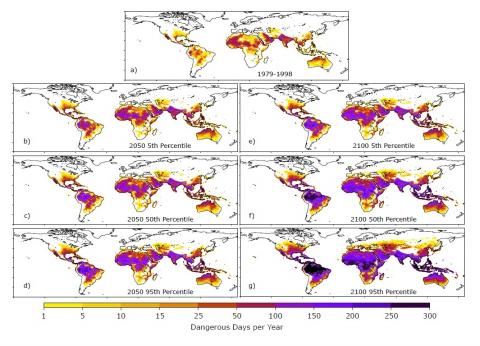The summer of 2023 the warmest in 2,000 years in the northern hemisphere, according to a study
An international group of researchers analyzed multiple data sets with current measurements and historical reconstructions. Their research concludes that, in the extratropical regions of the Northern Hemisphere (including Europe), the summer of 2023 was the warmest in 2,000 years. The authors published the results in the journal Nature.

Cabré - Verano (EN)
Anna Cabré
Climate physicist, oceanographer and research consultant at the University of Pennsylvania
The study thoroughly analyzes summer temperatures over land (excluding the sea) in the non-tropical northern hemisphere (30-90°N) over the last 2,000 years. It concludes that the past summer (June-August) of 2023 was the warmest in 2,000 years and exceeded natural climate variability with 95% certainty. Relative to the pre-industrial period (1850-1900), the summer of 2023 was 2.07 °C warmer. Relative to the entire pre-industrial period analyzed (0-1900), the summer of 2023 was 2.20 °C warmer (this difference is due to the presence of several cold periods before 1850).
We were already anticipating the northern hemisphere warming up faster, and the last summer being particularly warm due to climate change and the El Niño phenomenon. So this is not an unexpected result. However, it is still alarming and another reminder of the need to accelerate the transition to zero emissions. The importance of this study lies in the analysis of 2,000 years of data, which is not trivial, as the data becomes less precise as we go back in time, which technically complicates the analysis.
Ernesto Rodríguez - verano 2023 EN
Ernesto Rodríguez Camino
Senior State Meteorologist and president of Spanish Meteorological Association
The paper published by Esper and colleagues in Nature concludes that the summer of 2023 was the warmest summer of the past 2,000 years in the extratropical regions of the Northern Hemisphere. To reach this conclusion, they used a combination of observational data (from the mid-19th century) and reconstructions based on proxy data (over the entire period) to analyse surface air temperatures from June to August.
Perhaps, more than the conclusion as to the exceptional nature of the temperature of the year 2023 and in particular its boreal summer - which other studies with different methods, time periods and geographical areas had already established - what is really interesting is the combination of different data sources to cover the entire 2,000-year period and at the same time compare the limitations and biases of each data source. Within these limitations, it is perhaps worth highlighting the systematic bias in the first instrumental observations in the period 1850-1900 compared with a set of reconstructions, which could alter some of the quantitative aspects of the estimates of the current warming that take this period as a reference for the pre-industrial climate.
It is also worth noting the coincidence in 2023 of an event due to natural variability such as an El Niño episode -which tends to increase temperatures globally- with the general warming trend induced by the increase in the concentration of greenhouse gases, which the authors conveniently highlight in their article.
Esper et al.
- Research article
- Peer reviewed
- Modelling



